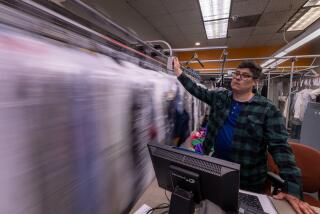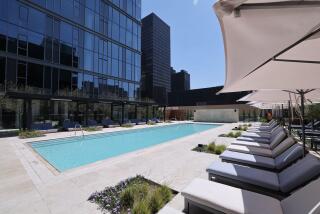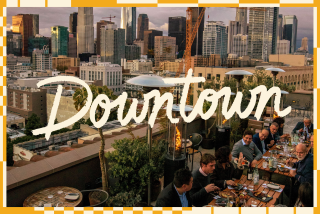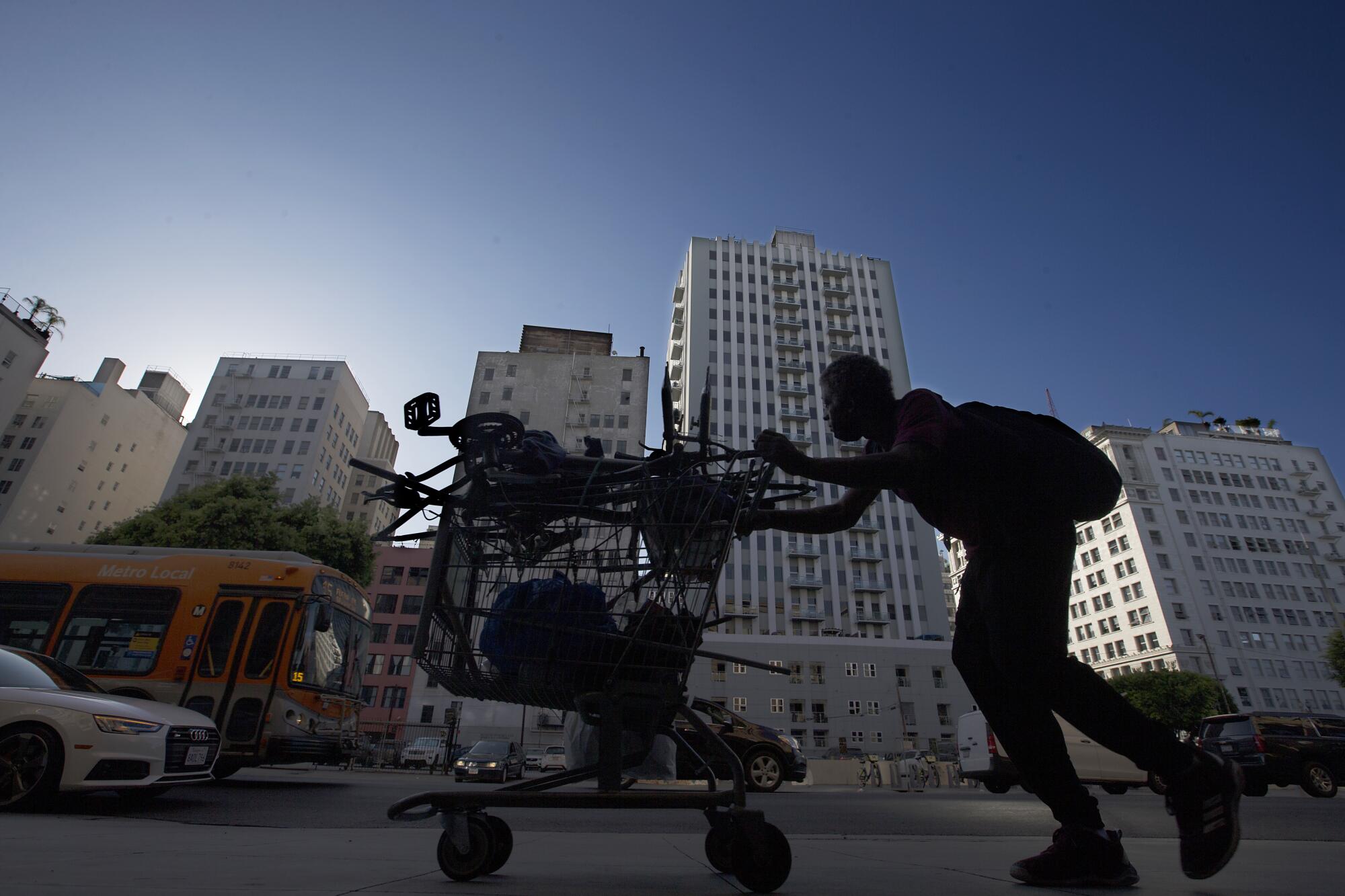
A yellow waterproof bag slung over his shoulder, Jimmy Lizama rises off his saddle and balances his bike waiting for the light to change. The sawtooth skyline of downtown Los Angeles cuts into the eastern sky.
Lizama is a bike messenger, starting his day in Koreatown. The son of Honduran immigrants, he has ridden these streets for more than 20 years, each day a new encounter with the city he grew up in.
Today will be busy — 10 stops, 30 miles — a Monday afternoon sprint from the Financial District to the Civic Center, skid row to South Park.
Four months into the pandemic, never has the city seemed so upside down. Parking attendants wave flags to the empty streets. Storefronts, boarded-up from break-ins, merge with stalled construction sites. Homeless camps double as sidewalk bazaars.
“COVID,” he says, “is a truth serum bringing it all out.”
For 10 years, downtown was a boom town, an improbable refutation of its history as a 9-to-5 enclave for commuters only. High-rises and low-rises became home to nearly 88,000 residents and a destination for visitors, 24/7.
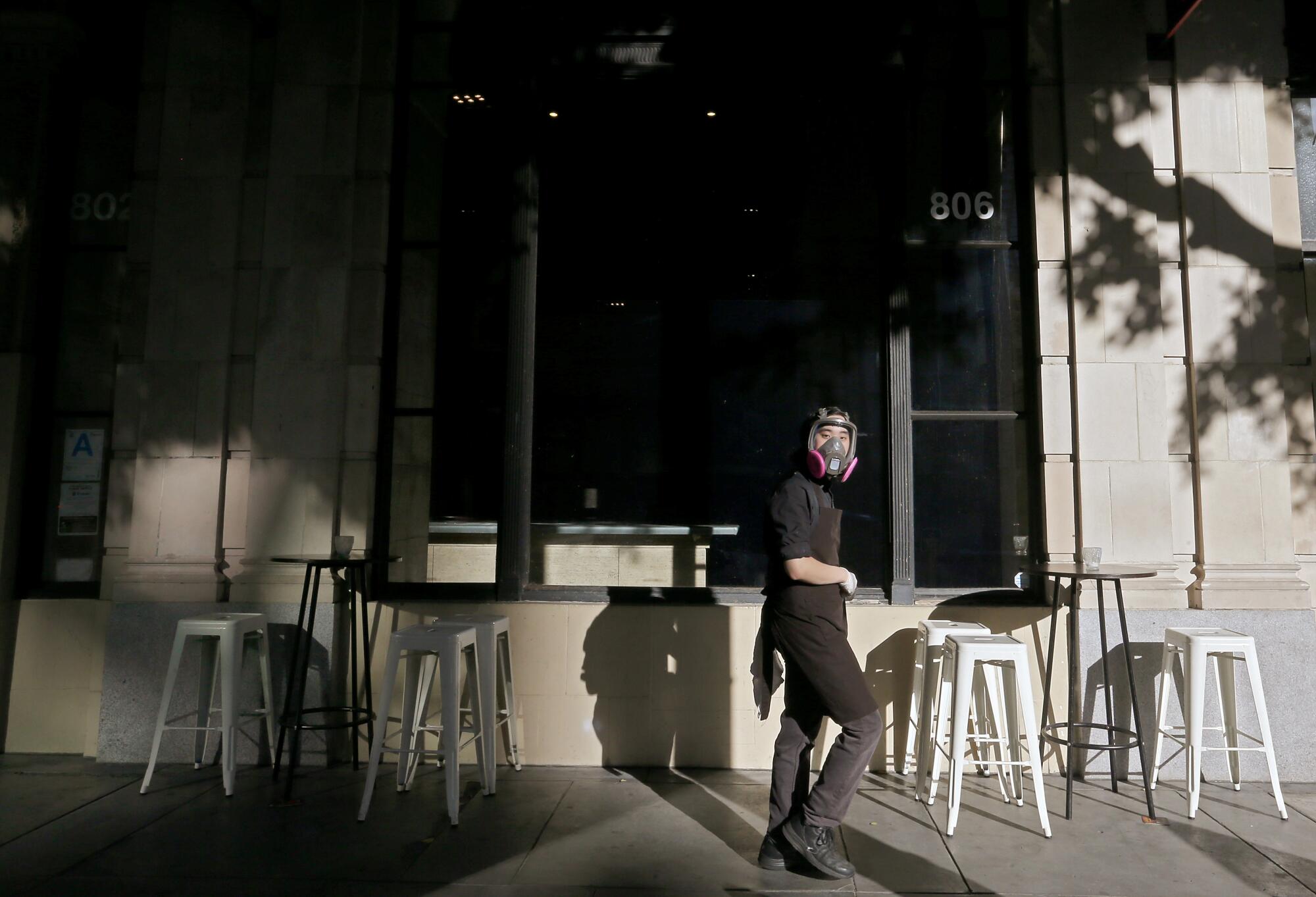
Developers renovated the Arts District and raised apartments in South Park. City agencies gained traction with the homeless population. Office vacancy rates fell, and from the 110 Freeway to the Los Angeles River, the city had a youthful, renegade, gastronomic vibe. After nearly a century, Los Angeles had a downtown that could rival other great American cities.
Then people started to get sick, and restaurants closed, residents fled and office workers kept a distance. Suddenly it was 2008 all over again, another recession tightening its grip on life, and the gains of the last decade — from blight to promise — are at risk.
The road ahead is clear. The light turns green, and Lizama falls into an easy cadence.
::
‘Much of the development in downtown has been happening at a furious and relentless pace with very little time to reflect on some of what has been made. Maybe it takes a moment like this to hit pause so that we can adjust our thinking in a more precise way.’
— Michael Maltzan, architect
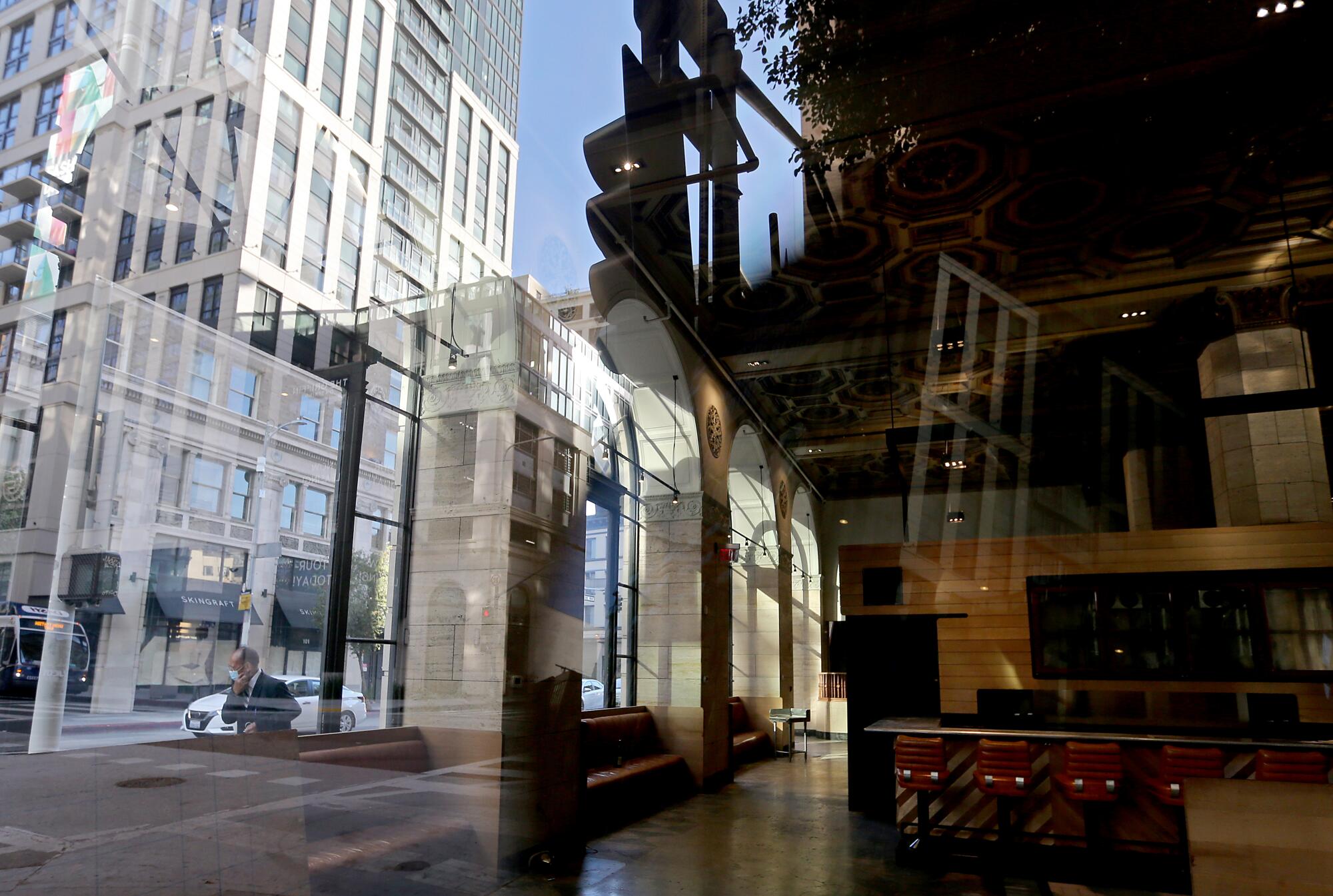
“Downtown is not one story,” said architect Michael Maltzan. “Downtown is constantly evolving. People tend to think of it as having one life, the life we know today.”
Having watched downtown’s recent developments — and contributed with such projects as One Santa Fe and the 6th Street Bridge — Maltzan is quick to accept the fluid nature of the city, citing decades of transformation driven by economic need.
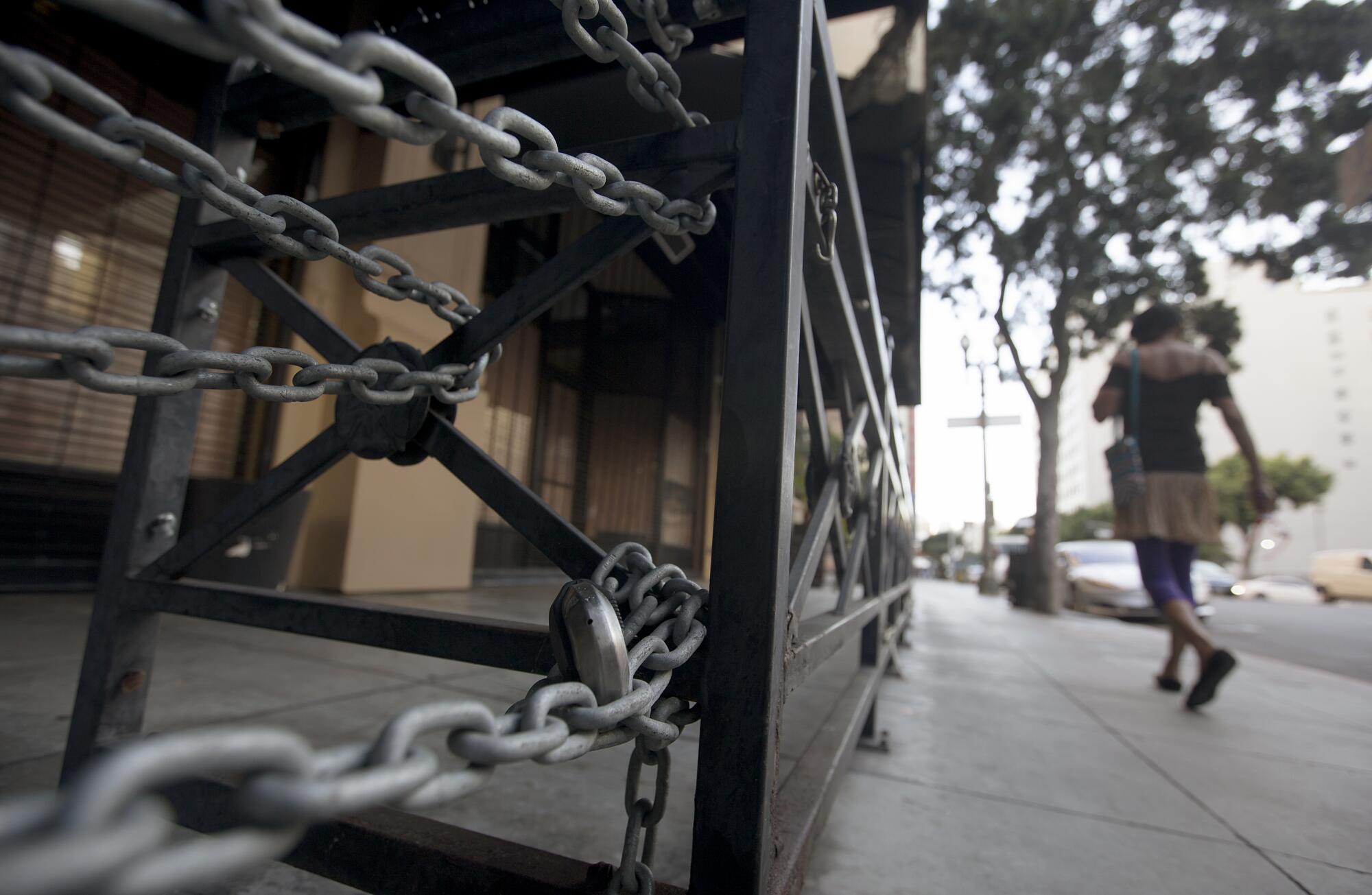
The dismantling of Bunker Hill. The loss of the Red Car. Changes in the shopping district into the 1990s. The evolution of Broadway: Latino shopping center to today’s gentrification.
The last 10 years have been especially frantic, and the last five months have exposed the city’s weaknesses, especially the chasm of inequity.
“Much of the development in downtown has been happening at a furious and relentless pace with very little time to reflect on some of what has been made,” Maltzan said. “Maybe it takes a moment like this to hit pause so that we can adjust our thinking in a more precise way.”
The solutions, argues historian D.J. Waldie, will not reveal themselves immediately.
“No answer can be read in the current tea leaves,” he said, trying to imagine downtown’s future.
It had acquired a “genuine sense of place,” not just from businesses and residents, but “from footfalls and contemplation, the passing of shadows over facades and the sound of walkers chatting on their way.”
“At this point in the pandemic and the economic shock that the pandemic brought,” he said, “it is hard to see how that efflorescence, entrepreneurial creativity and growth will survive.”
::

Lizama’s first stop is at the corner of 7th and Figueroa. The intersection is normally jammed with pedestrians flooding out of the transit station, but ridership, according to Metro, is roughly half what it was before COVID-19.
Lizama, 46, locks up his Demon Bike, an old Kestrel carbon-fiber frame with flat bars and a 10-by-1 gearing ratio designed for the stop-and-go of weekday traffic.
“COVID points to a society that needs to slow the hell down and reexamine their values,” Lizama says.
Dressed in cutoff Dickies, clip-less cycling shoes, a black Subhumans shirt, sporting a dreadhawk and Che beard, he rides the elevator to the ninth floor, where he serves the first round of the day’s summons and subpoenas. He calls his business Don’t Shoot the Bike Messenger.
At its peak, nearly 100 bike messengers crisscrossed downtown from offices to courthouses, the law library to apartments and homes. The numbers fell off when e-filing became more acceptable, a trend the pandemic has only encouraged. He guesses there are 20 riders left, many now supplementing lost income with food deliveries.
But Lizama will avoid that route as long as he can; it doesn’t pay enough. He depends on his other business, a bike shop he calls Relámpago — as in “lightning” — Wheelery, to supplement his income.
He reaches into his shoulder bag and hands the papers to the clerk.
::
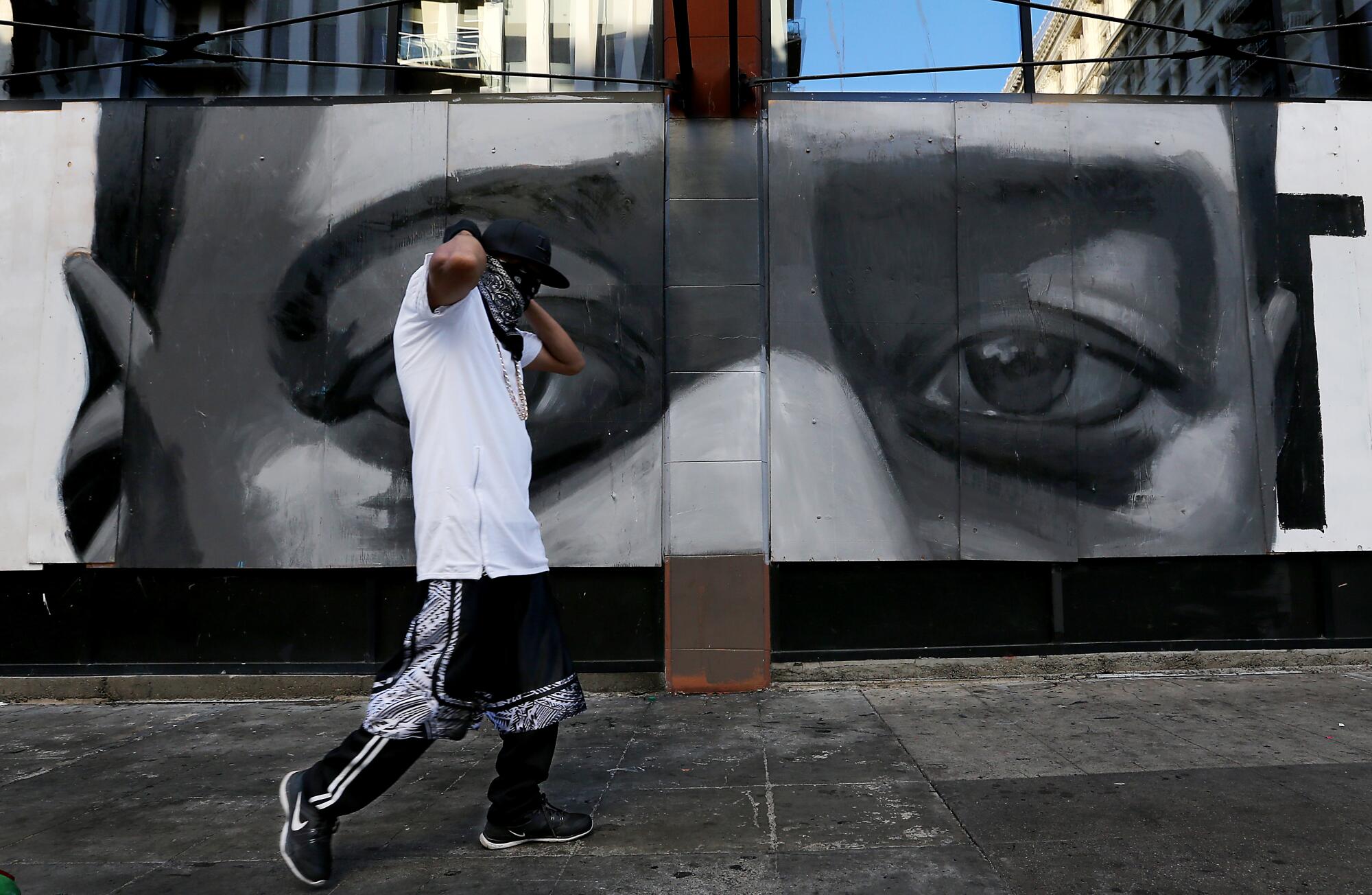
Over the years, the identity of downtown Los Angeles has emerged through a collection of neighborhoods chiseled from neglect and speculation.
The Arts District grew out of an abandoned industrial and warehouse district. South Park rose on the success of Staples Center and L.A. Live. The Historic District drew residents to its Beaux Arts heritage.
The Financial District evolved on the commitment of business, but now that is in question.
When the real estate services firm CBRE conducted a national survey of 126 executives about future plans, 70% indicated that some portion of their workforce would work remotely for the immediate future.
John Zanetos, a broker with CBRE, feels the emptiness. He occasionally drives from his Manhattan Beach home to meet prospective tenants downtown, where many office buildings stand nearly 90% empty.
Still, Zanetos is optimistic: “Los Angeles has not been hit as hard as other metropolitan areas.”
He believes that the diversity of downtown will keep it safe from a significant downturn. Nearly 90,000 residents and close to 30 million square feet of office space are a formula for resilience.

Tony Morales, a broker at the competing brokerage JLL, will hold his predictions until the third-quarter numbers come in late September, but he’s tracking subleases. Ten sizable offices have come on the market in the last four months, he said, suggesting that some tenants are just as happy to work at home and wait out the slowdown.
Morales works across the street from the Central Library at City National Plaza. The two office towers, which would normally have a population of 3,000 people, now support about 350, he says.
For nearly 30 years, Morales has watched office vacancy rates average around 16%. He expects by the end of the pandemic for rates to edge toward 20%, one percentage point shy of the high in 2014. Anything higher, he said, would be “cataclysmic.”
“I tell my kids we don’t know what the end is,” he said. “In 2007-10 we knew we were going to come out of it, but we just can’t predict a pandemic.”
::
‘The loss of the season has been devastating. To not be performing is unimaginable.’
— Andrew Lowy, musician with the L.A. Philharmonic
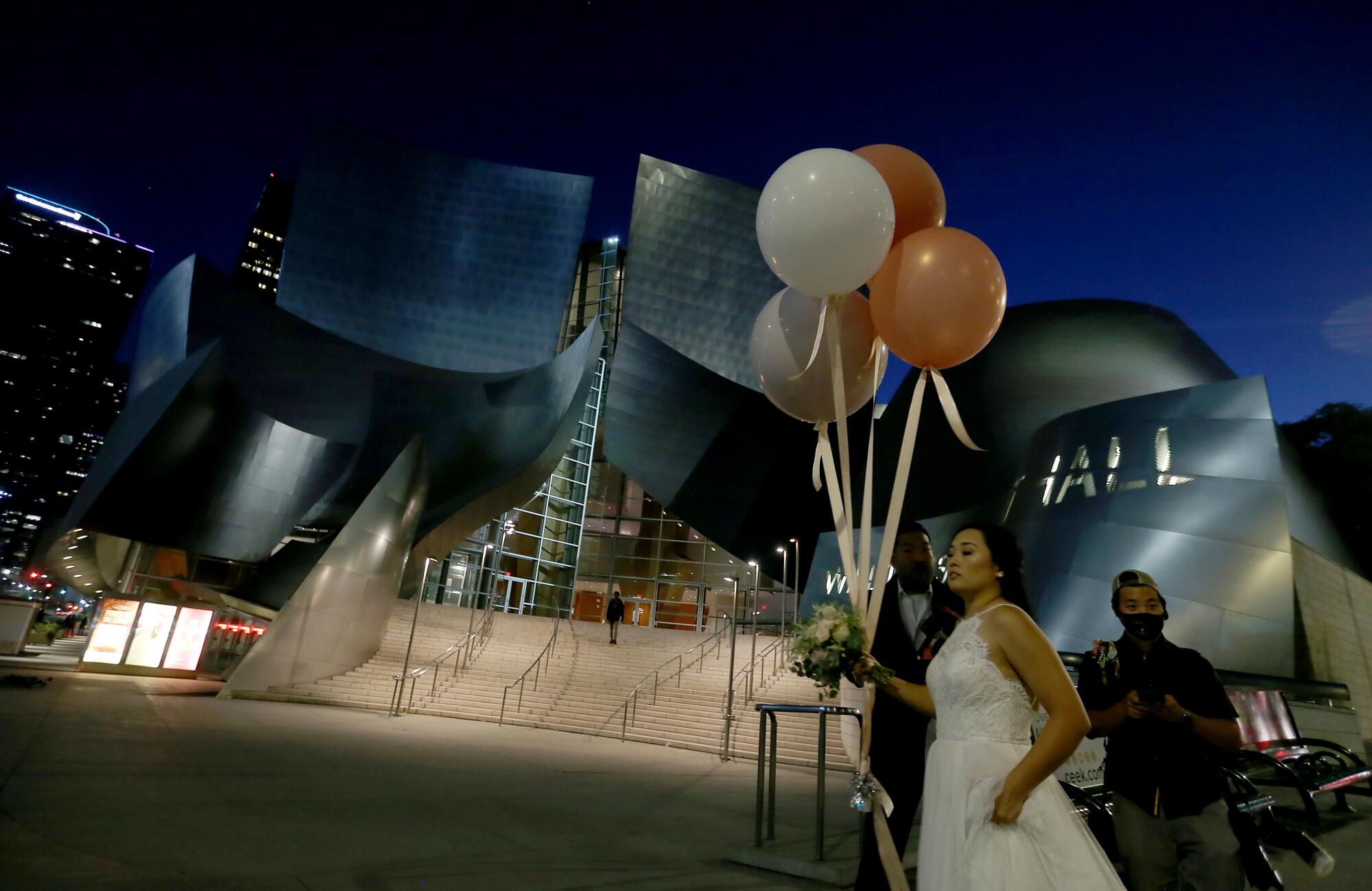
Spinning along Hill Street, Lizama passes Angels Flight (closed) and Grand Central Market (open). He avoids having to climb the Grand Avenue hill if he can.
The urban dream of Eli Broad and Frank Gehry, Grand is a destination for picture-takers, skateboarders and construction crews, working on the eponymous Grand, the $1-billion residential and office complex rising across from the Disney Concert Hall, where Andrew Lowy showed up for work not so long ago.
Lowy plays second and E-flat clarinet for the Los Angeles Philharmonic, which has canceled its performances through Dec. 31.
“The loss of the season has been devastating,” said Lowy, who would otherwise be at the Hollywood Bowl. “To not be performing is unimaginable.”
Last October, Lowy and his husband purchased a loft in the Arts District. The couple were drawn to the vitality of the neighborhood, and Lowy would either walk or take a DASH bus to work. When he got home from concerts, they were able to find a place for a late dinner and a drink.
Bon Temps was a favorite but is now closed; Nightshade is temporarily shut. The pandemic has taken its toll. “Tumbleweeds,” he said, describing the bleak emptiness of the streets during the stay-at-home orders.
Life is coming back, he says, with people eating outdoors, waiting in line for ice cream on 3rd Street. The small boutiques are closed, but Lowy is optimistic that the Arts District has enough anchors — restaurants such as Bestia, Wurstküche and the Arts District Brewing Co. — to sustain the momentum.

A mile west in the Historic District, chef Josef Centeno is trying to hold on. Last month, he closed his landmark restaurant Bäco Mercat, which debuted in 2011. The restaurant was small, incompatible with the demands of social distancing. When crowded, customers huddled around a 12-seat bar where strangers ended up sharing a glass of wine with one another.
Centeno is adapting his two other restaurants in the same neighborhood, Bar Amá and Orsa & Winston, to the new standards if only to “stay afloat and pay the staff I have now.”
“We do in one week what we used to do on a busy Friday night,” he said. “I think it’s going to take all of Los Angeles, the whole country, a long time to recover.”
::
Lizama makes three stops in the Civic Center before heading south to the Fashion District.
Past Little Tokyo, the route becomes more littered with trash and potholes. The smell of excrement, urine and weed hits him as he blurs past homeless encampments.
‘When people started talking about recovery after the quarantine and stay-at-home order, I had to wonder. Recovery is a word of privilege considering our reality and the patients we represent. We’re not in recovery.’
— Shannon Fernando, nurse practitioner with L.A. Christian Health Centers
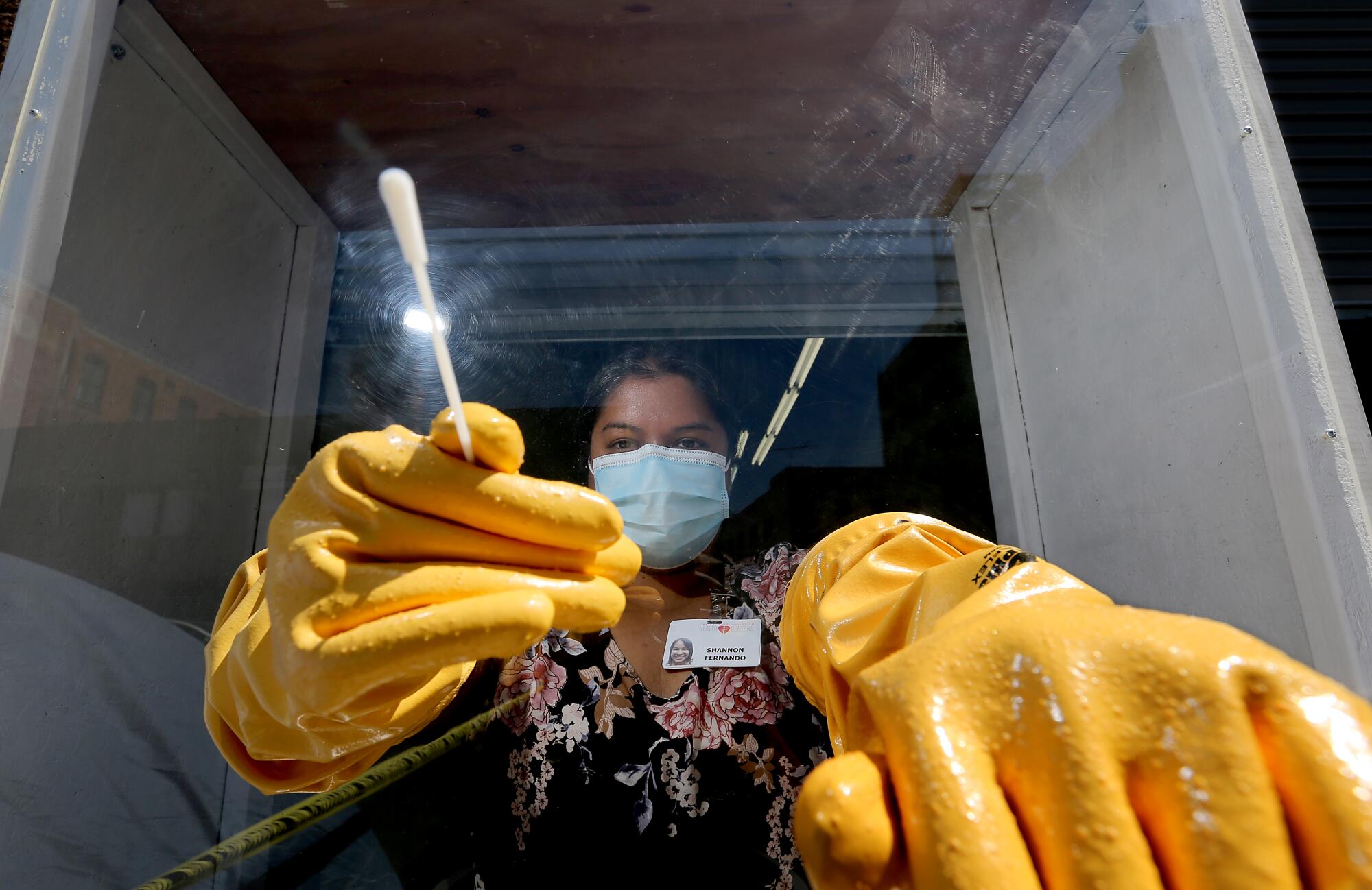
Shannon Fernando is a nurse practitioner with L.A. Christian Health Centers, a medical clinic on skid row. Before the pandemic, she and her teams treated about 60 people a month on the street. Today they see about 250 a month, an increase due to COVID-19 testing.
“We have seen a burgeoning of people who are unhoused, especially in skid row,” she said, describing how the most vulnerable — newly released from jail or living in nursing homes and shelters — are choosing a tent on the street.
“When people started talking about recovery after the quarantine and stay-at-home order, I had to wonder,” she said. “ ‘Recovery’ is a word of privilege considering our reality and the patients we represent. We’re not in recovery.”
Ciara DeVozza, with the homeless outreach agency the People Concern, also works with homeless clients on skid row.
“We had a rhythm prior to the pandemic,” said DeVozza, who has been downtown for nearly three years. “After COVID-19, it has been very difficult to gain a rhythm.”
Procedures and resources are changing, she explains. Case managers are now medical responders, COVID testers, EMTs, mental health clinicians, disaster services workers.
Her teams are “amazing and resilient,” she said, but “overwhelmed.”
::
‘COVID points to a society that needs to slow the hell down and reexamine their values.’
— Jimmy Lizama, bicycle messenger and bike shop owner
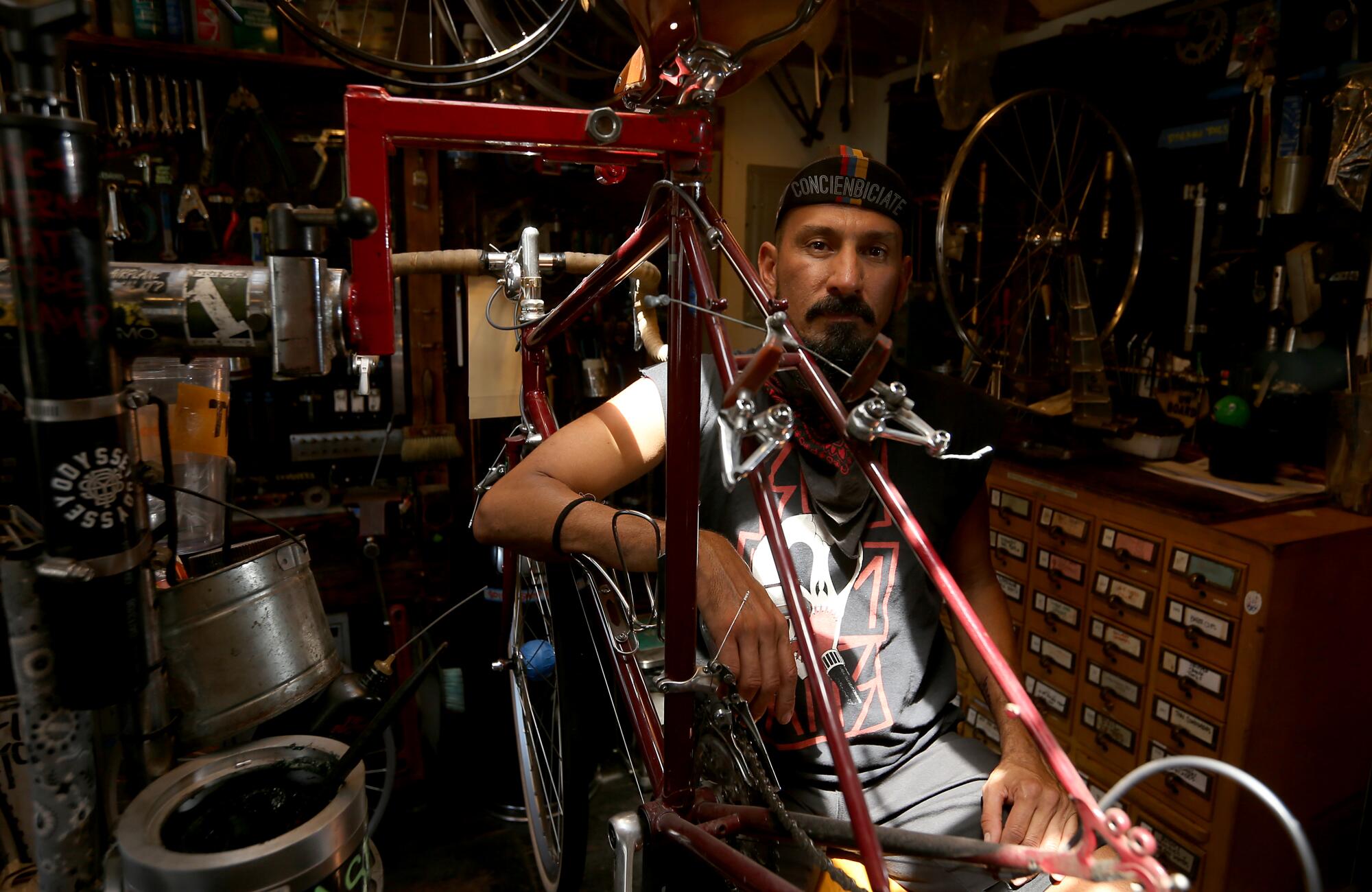
Lizama smells tacos and hears merengue music amid the crowds of the Piñata District, just past the Flower Market. Sidewalks are covered with merchandise, so customers don’t have to enter the warren of stores.
COVID-19 has done something extraordinary, Lizama says. We have to listen to its message, which can be heard wherever opportunity and desperation mix.
In the historic core on Main Street and Spring Street, these disparities are in sharp relief as residents try to cohabit with people on the sidewalks.
“I couldn’t imagine this happening,” said an apartment manager, who requested anonymity for fear of losing his job.
Four years ago, he and his wife found a place to live in the neighborhood where a number of mom-and-pop businesses had gotten established. The area was not as blighted back then, he said, but when the pandemic hit, encampments began to spread out from skid row.
“By March, they were at 8th Street,” he said. “Then by April and May, they were at 6th.”
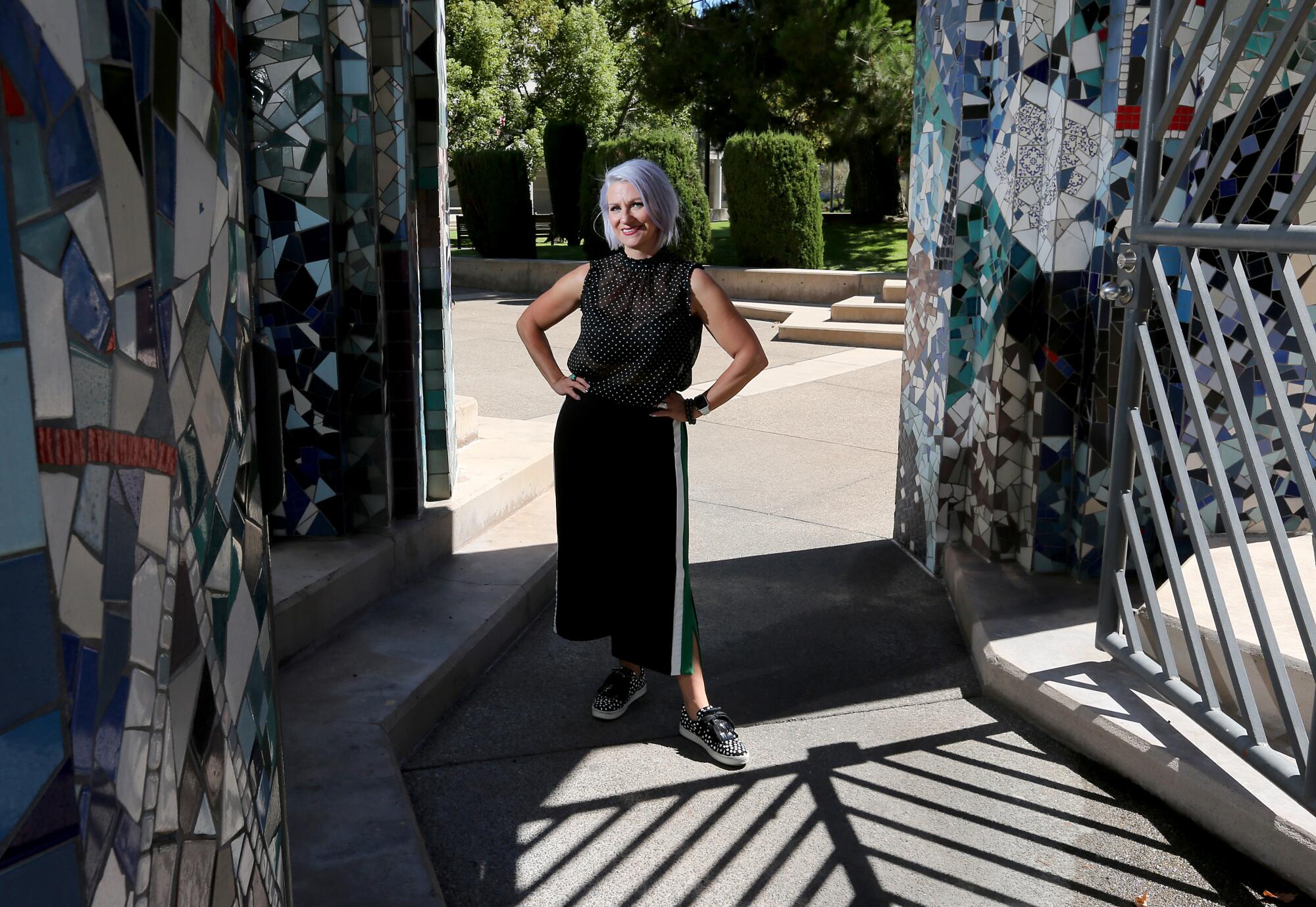
Going for a walk became difficult, he said. There was meth smoke in the air, and he worried that his dog would step on a needle. When prospective renters made appointments to tour a unit and never showed up, he understood why.
Smaller retail stores — the vegan ice cream shop Divine Dips, the pet lifestyle boutique Pussy and Pooch — were leaving. Storefronts were boarded up after the protests against police violence.
“We thought downtown would continue improving,” he said, as he thinks about leaving Los Angeles entirely.
The building he manages, which had a vacancy rate of almost 10% in 2019, now stands 30% empty.
::
By 5 p.m., Lizama is nearly finished. Riding west on Olympic Boulevard, he passes through South Park.
Leasing signs make it clear that students from USC and the fashion college FIDM have deferred fall enrollment. Retail businesses are struggling to adapt, as are developers.
Some projects are already converting retail space into office space, said Morales of JLL. “And some office goes to residential, but that’s a longer process.”
Architect Maltzan finds hope in such fluidity, which is important for downtown, where density has been favored over sprawl. But whether density is compatible with a post-pandemic environment is unclear.
“One of my biggest concerns,” said Maltzan, “is that the reaction of COVID is going to create ammunition for density opposition. I believe it would be a terrible mistake if we returned to the suburban sprawl model that has made up most of L.A. development history.”
Lizama turns left on Figueroa and spins through the canyon of L.A. Live, where huge monitors advertise Nike to no one.
He then begins to make his way back to his home in K-town.
Today was busy, and he anticipates tomorrow to be slow. But he knows this will only be temporary.
Any moment now, he expects a flood of work as landlords begin evicting tenants unable to pay rents because of the pandemic.
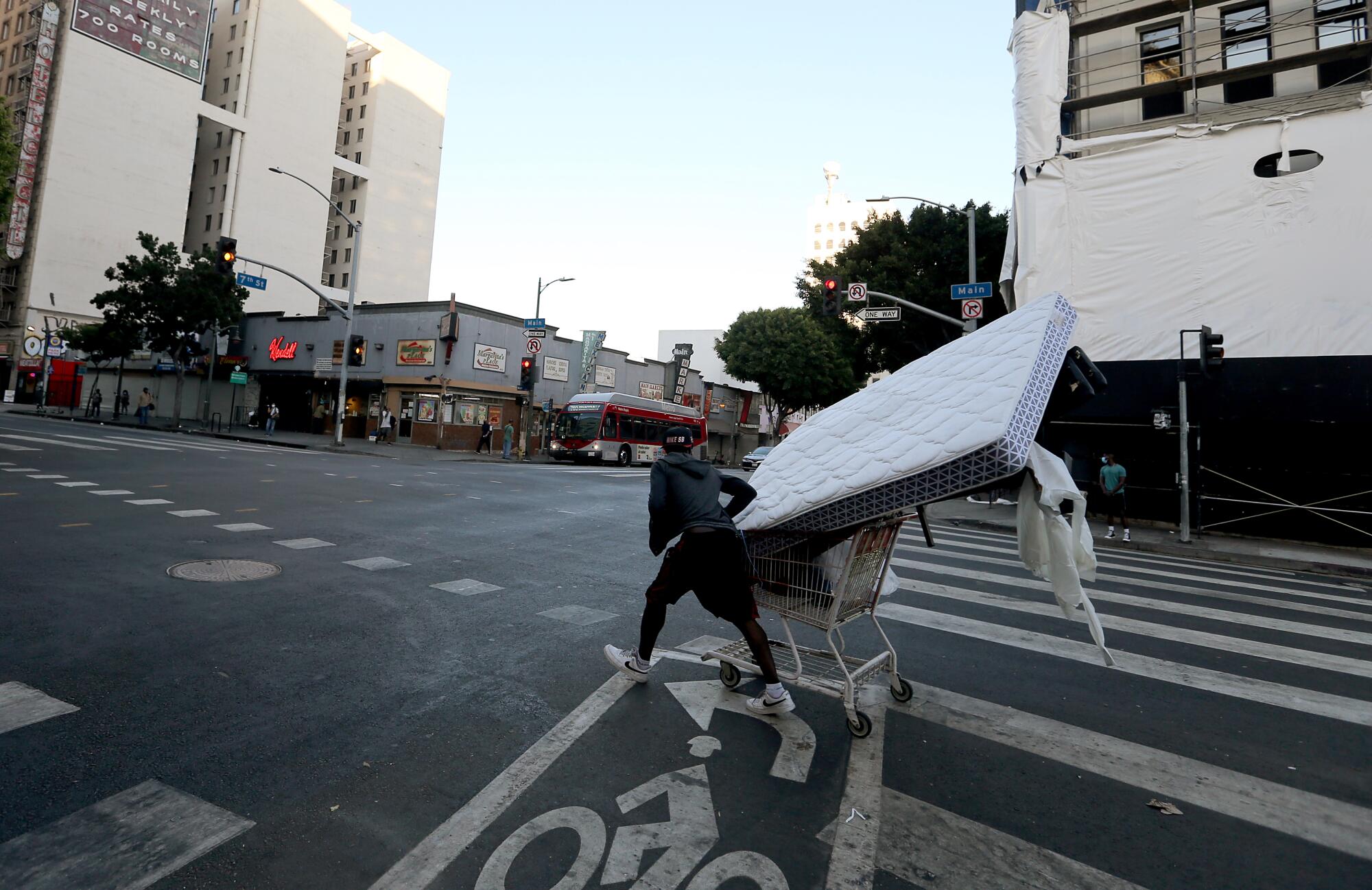
More to Read
Sign up for Essential California
The most important California stories and recommendations in your inbox every morning.
You may occasionally receive promotional content from the Los Angeles Times.
